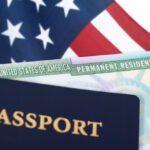In support of Afghan pilots who have resettled in the U.S., Upwardly Global published a landscape assessment and proposed program plan earlier this year. The scope of the research included a high-level overview of potential pathways in the U.S., as well as proposed tools for service providers to help these individuals find skill-aligned employment. This post builds upon that body of research.
In the last year, hundreds of pilots and other aviation professionals from Afghanistan were resettled in the U.S. through Operation Allies Welcome. Many of the pilots flew for the Afghan Air Force; some had commercial licenses obtained in other countries and were flying for airlines in Afghanistan; and others trained on U.S. soil with the American military.
Aviation is a heavily regulated industry. Given the complex array of Federal Aviation Administration (FAA) requirements for certification and licensing, a diffuse network of training and employment partners, uncertain long-term immigration status, and a broad range of flight hours and experience with different aircrafts, there is not a single and sure path for this cohort of Afghan pilots to fly in the U.S. Costs will also vary significantly, nearing close to $100,000 for an airline transport pilot license (ATPL) depending on how many flight hours will transfer.
Three Pathways for Afghans with Aviation Backgrounds
Near-Term Employment: Aviation-Adjacent Pathways :
Excluding those who trained in the U.S. and/or already have FAA credentials, we encourage job seekers to pursue “aviation-adjacent” options in the near-term that do not require certification or licensing. These kinds of “para-aviation” roles help job seekers build experience in a related field and provide exposure to a U.S. work environment, including the opportunity to learn the organizational culture from within, make networking connections, practice conversational and professional English, gain access to future training opportunities with certain employers, and minimize resume gaps. Job seekers can earn an income while pursuing longer-term goals.
The scope of Upwardly Global’s research did not include a full assessment of these positions, and we recommend working with job seekers to identify the roles that will best leverage their specific skill set. For pilots accustomed to servicing their aircraft, for instance, roles like fuel line technicians and mechanic helpers may be a good choice. Individuals with experience in operations may want to focus on supply chain, crew support, or customer service positions. Those who entered the aviation sector with engineering experience may want to pursue that pathway. Additional research on sites like Glassdoor and Indeed will be helpful for narrowing down the options.
Medium-Term Training & Employment: FAA-Certified Roles
FAA certifications offer additional opportunities for career growth, higher pay, and job security. There are many types of certifications, such as flight dispatcher, airframe and powerplant, mechanic, and others. We encourage you to work with job seekers to explore options that are right for them and to develop a plan for financing the training costs.
Based on our conversations with employers, for those ultimately seeking to get their airline transport pilot license (ATPL), the flight dispatcher pathway was interesting given the alignment around skill set, relatively short training time, and labor market demand. Upwardly Global is currently piloting a small training cohort for dispatchers, and we look forward to sharing information about our learning and insights in the coming months.
Longer-Term Training & Employment: Licensed Pilot
Our intent is to encourage a sense of optimism while conveying with transparency that this pathway will be costly and time consuming. The combination of credential verification, training requirements, and immigration status means becoming a licensed pilot in the U.S. could take several years. Much like the process for internationally trained physicians who want to practice medicine in the U.S., individuals may need to find skill-adjacent work and repeat training while they credential back into the industry.
Whether or not flight hours in Afghanistan can be documented and transferred in full—which will dictate the length of training and ultimately cost—is a moving target. Additionally, the individuals who flew for the Afghan Air Force had a certificate, and not a license, which may complicate the transfer of credentials. Individual training schools will vary in price, and it’s unclear if many will accept financial aid or offer tuition subsidies.
Based on our research and conversations with national and regional airlines, even if FAA-approved training programs recognize international flight hours, employers may not. And employers may also have further requirements, such as a U.S. passport that allows for free entry and exit at the airline’s destination countries.
Flying for the U.S. military may potentially be an option down the road once individuals receive a green card; it is not possible with Special Immigrant Visa or parolee status. For non-military pilot options, there are a range of licensed pathways (PPL, CFI, CPL, ATPL, etc.). We strongly recommend pursuing any and all pilot training through FAA-approved training programs only, as these schools are more likely to have processes for transferring international flight hours than non-FAA-approved programs.
Supporting Job Seekers with Aviation Backgrounds
As service providers, you can encourage job seekers to:
- Focus on practicing English (if they are not already fluent), as proficiency is required for all FAA certifications and licenses. While there are industry-specific English courses for the aviation sector, we urge caution to job seekers before pursuing these because they can be expensive and vary significantly in quality.
- Remain open to internships and/or apprenticeships for aviation-adjacent opportunities, which can be a terrific entry point toward permanent employment.
Explore local resources for your job seekers:
- The U.S. Office of Refugee Resettlement (ORR) Refugee Career Pathways program may offer additional resources for newcomers; we encourage you to contact any of the current grantees that are in your local or regional area.
- Contact employers in your community to foster introductions; see if they are open to hiring internationally trained talent and/or conducting informational interviews.
- Reach out to community colleges regarding short-term and low-cost training pathways, such as cable harness wiring, composite training, and other opportunities; some of these programs may offer apprenticeships as well as employer connections.
- Connect with your local workforce development boards and chambers of commerce to identify employers that have committed to hiring newcomers.
Additional Resources
- More information can be found at the FAA “Become a Pilot” landing page. It may be helpful to contact your nearest FAA Flight Standards District Office if you meet the eligibility requirements and are prepared to get started.
- Upwardly Global has a free and self-paced Afghan response portal, a virtual learning platform with information about U.S. workplace norms, a resume-building tool, and interviewing tips.
- Upwardly Global’s Jobversity program offers a suite of specialized learning and training resources that empower organizations serving diverse job seekers; contact us if you are a service provider and would like to learn more about options for technical assistance.










